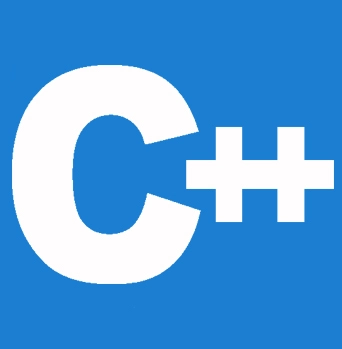


在本教程中,我们将通过示例演示如何在 C++ 中将一维和多维数组作为函数参数传递。在 C++ 中,数组主要可以作为参数传递给函数。此外,函数可以返回数组。在学习将数组作为函数参数传递之前,请确保您理解 C++ 数组和 C++ 函数。
语法
在 C++ 中主要将数组传递给函数的语法
returnType functionName(dataType arrayName[arraySize]) {
// statement
}
例如
int total(int num[4]) {
// statement
}
在这种情况下,我们将一个名为 num 的 int 类型数组传递给 total() 函数。该数组的大小为 4。
有两种方法可以实现此目的:值传递和引用传递。
int sum(int arr[]);
int sum(int* ptr);
让我们创建一个非常基本的程序,其中 main() 函数声明并定义一个整数数组,并将数组的每个成员发送到一个只打印元素值的函数。
// Displaying a single array element using C++
#include <iostream>
using namespace std;
void arr(int a ) {
// just display the array elements
cout << "Numbers " << a <<endl;
}
int main() {
// here we should declare as well as initialize an array
int myArr[] = {11, 12, 13};
arr(myArr[1]); //just pass the array element myArr[1] only.
return 0;
}
输出
Numbers 12
// C++ Program to display roll numbers of 6 students
#include <iostream>
using namespace std;
// declare function in order to display the Roll Number & take a 1d array as parameter
void display(int a[6]) {
cout << "Display The Roll Numbers: " << endl;
// display array elements
for (int i = 0; i < 6; ++i) {
cout << "Student " << i + 1 << ": " << a[i] << endl;
}
}
int main() {
// declare and initialize an array
int rollNum[6] = {41, 11, 73, 32,67,100};
display(rollNum); // call display function pass array as argument
return 0;
}
输出
Display The Roll Numbers: Student 1: 41 Student 2: 11 Student 3: 73 Student 4: 32 Student 5: 67 Student 6: 100
让我们看看上面程序的运行情况
void display(int m[6])
在这种情况下,参数 rollNum 表示数组 rollNum[6] 的第一个元素的内存地址。
display() 函数的参数。
display(rollNum);
在这种情况下,我们在函数参数中使用完整的数组声明,其中还包括方括号 []。
int m[6] 被函数参数转换为 int* m。这将指向与数组 marks 指向的相同地址。因此,无论何时我们在函数体中更改 m[6],我们实际上都在更改原始数组 marks。这就是 C++ 管理向函数提供数组以节省内存和时间的方式。数组的全部内容不能作为参数传递给 C++ 中的函数。仅数组名,不带索引,允许您提供指向数组的指针。
您可以通过以下三种方法之一声明函数的形参,以将一维数组作为参数传递。所有三种声明过程都产生相同的结果,因为它们都通知编译器将接收一个整数指针。
void myFunction(int *param) {
.
.
.
}
void myFunction(int param[20]) {
.
.
.
}
void myFunction(int param[]) {
.
.
.
}
现在考虑下面的函数,它将接受一个数组作为输入以及另一个参数。主要根据传递的参数,它将返回通过数组传递的数字的平均值,如下所示。
double getAverage(int arr[], int size) {
int i, sum = 0;
double avg;
for (i = 0; i < size; ++i) {
sum += arr[i];
}
avg = double(sum) / size;
return avg;
}
接下来,让我们完全按照以下方式调用上述函数
#include <iostream>
using namespace std;
// function declaration:
double getAverage(int arr[], int size);
int main () {
// an int array with 5 elements.
int balance[5] = {1000, 2, 3, 17, 50};
double avg;
// pass pointer to the array as an argument.
avg = getAverage( balance, 5 ) ;
// output the returned value
cout << "Average value is: " << avg << endl;
return 0;
}
输出
Average value is: 214.4
如您所见,该方法不关心数组的长度,因为 C++ 不对形参进行任何边界检查。
#include <iostream>
using namespace std;
// just define a function
// pass a 2 dimensional array as a parameter
void display(int n[][3]) {
cout << " The Displaying Values: " << endl;
for (int i = 0; i < 4; ++i) {
for (int j = 0; j < 3; ++j) {
cout << "num[" << i << "][" << j << "]: " << n[i][j] << endl;
}
}
}
int main() {
// initialize 2d array
int num[4][3] = {
{8, 4},
{9, 3},
{5, 1}
};
// call the function
// pass a 2d array as an argument
display(num);
return 0;
}
输出
The Displaying Values: num[0][0]: 8 num[0][1]: 4 num[0][2]: 0 num[1][0]: 9 num[1][1]: 3 num[1][2]: 0 num[2][0]: 5 num[2][1]: 1 num[2][2]: 0 num[3][0]: 0 num[3][1]: 0 num[3][2]: 0
上述程序中定义了一个名为 display() 的函数。该函数将接收一个二维数组。它接受 int n[][3] 的参数并输出内容,这意味着数组的元素。
我们在调用函数 (arr) 时只将二维数组的名称作为函数参数 display 传递。